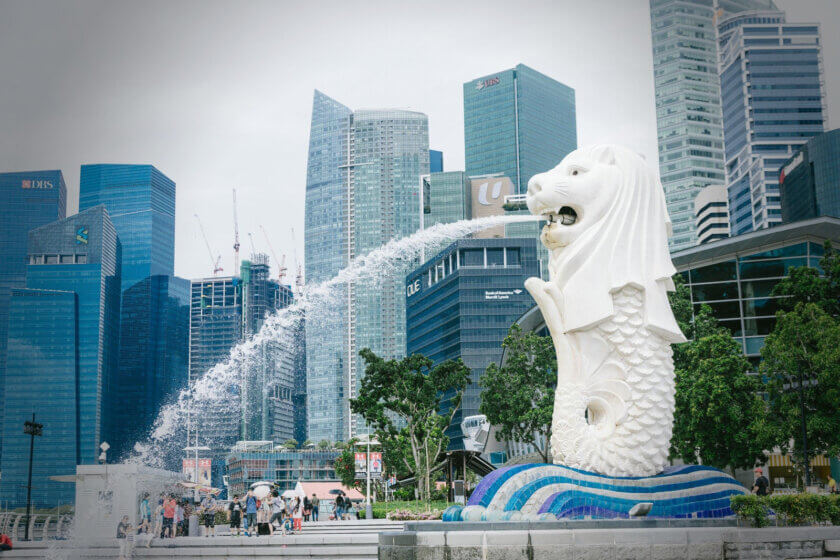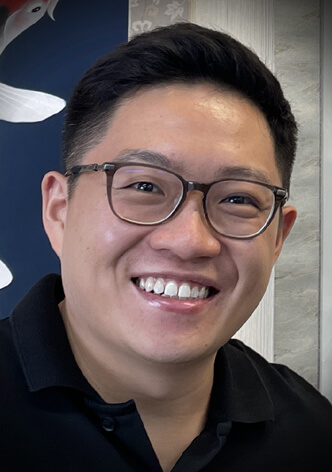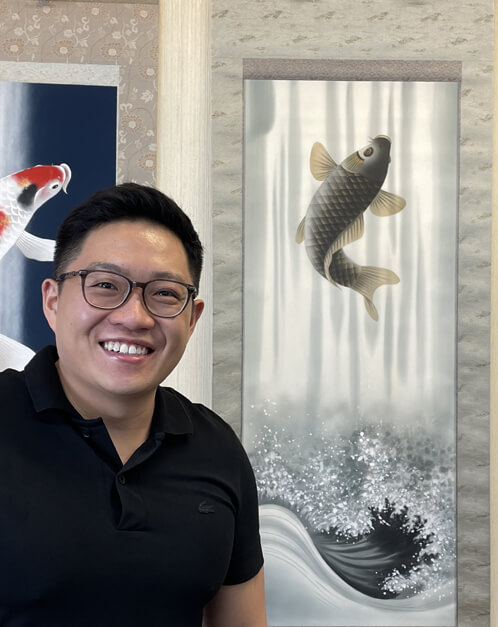A Wonderful Customer from Singapore: Visiting Our Kakejiku Shop

With the end of the COVID-19 pandemic and the revival of inbound tourism, we have been welcoming visitors from various countries to our shop. Today, we would like to share a special story about a wonderful customer from Singapore.
One day, a smiling gentleman walked into our gallery.

As we spoke, we learned that he was a customer from Singapore, looking for a new kakejiku to display in his office alongside an ink wash landscape painting kakejiku he had purchased at an antique shop in Omotesandō, Tokyo.
Although he did not have an appointment, his surprise visit was an exciting event for us.
The customer visits Japan about six times a year for both work and leisure, and this time he came all the way to Kobe to find a kakejiku to decorate his office.
Initially, he was interested in an ink wash landscape painting kakejiku, but as he explored our extensive collection, he also became fascinated by the koi no takinobori (carp climbing the waterfall) kakejiku. After comparing several koi no takinobori kakejiku, he narrowed his choice down to two.
We carefully advised him, considering the color scheme and ambiance of his office, and were deeply moved by his strong interest and enthusiasm in selecting the perfect kakejiku.
After much contemplation, he chose a more subdued koi no takinobori kakejiku.

It was truly a pleasure to help add a new touch of beauty to his life.
The customer later left us a wonderful review:
What A Joy!
Firstly, extremely sorry for this late review as I have been traveling non-stop since I returned from Japan! Gomennasai! I have been searching for another kakejiku for my new office and found Art Nomura on Google. On my recent trip to Osaka, I decided to make the journey to Kobe and was extremely surprised by the vast collection that they had for me to choose from (it is very hard to find kakejikus in Japan but this place is a gem). You will not be able to fully appreciate how professional and passionate these lovely people are until you meet them in-person. They were so patient in helping me shortlist and decide on which one would suit the colour scheme of the room. I was very pleased to find one that I truly liked and I have it hung proudly on my backwall in time for the Chinese Lunar New Year. Thank you so much and I hope to be back in the near future!
Reading this review, we were deeply moved. It is a great joy for us to know that our customer enjoyed their experience at our shop.
This visit from a customer in Singapore was a special event for us. Being able to meet our customers’ expectations and seeing their satisfaction is the most rewarding feeling. We will continue to offer a rich collection and heartfelt service to delight many more customers in the future.
Thank you for reading to the end. At our shop, we strive to meet our customers’ expectations and provide the finest kakejiku.
We look forward to welcoming you soon.

